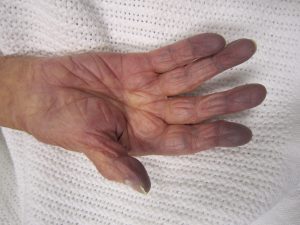Why Do We Need Mechanical Ventilation?
Reasons for mechanical ventilation can fall into three main categories:
- Hypoxic failure (also called hypoxia) is the inability to oxygenate the body adequately. Issues with the lungs, circulating blood, or the heart can result in inadequate oxygen being delivered to the organs and tissue. If not corrected, this low oxygen can cause organ failure and irreversible damage.
- Hypercapnia, or high CO2 levels, can occur because of compromised breathing or other illnesses in the body. If CO2 increases to a level the body cannot clear by increasing breathing, mechanical ventilation is indicated.
- An ineffective drive to breathe can occur if there is an injury to the brain or neurological control to breathing. It can occur with spinal or nerve injuries as well, where the triggers of ventilation do not result in an intact signal to breathe. These cases will always require mechanical ventilation to take over the impaired drive to breathe.
Remember when you learned about those chemoreceptors in the brain, which are sensing oxygen and CO2 levels? Anything that interrupts the signal from the brain to the lungs, or if the signals or subsequent breaths are not adequate for what the body needs, will require ventilation. The body naturally wants to keep the CO2 levels within a desired range and wants to take in enough oxygen to feed the body. When a patient gets sick or has any type of organ dysfunction, this can quickly cause a disruption in the balance of the body by increase the oxygen consumption or increasing the CO2 production of the cells. When this happens, the body will try to compensate, but this compensation can only go so far. As patients get sicker, there may come a point where the oxygen levels are too low (hypoxic failure) or CO2 levels are too high for the lungs to compensate (hypercapnia), and mechanical ventilation is necessary to help restore healthy levels of CO2 or oxygen.

Mechanical ventilation has evolved so much since its infancy, and it is a constantly changing world. In particular, medical researchers have extensively studied the effects of positive pressure ventilation and how traumatic it is to the lungs. Interrupting the physiological process of breathing is never a good thing, and scientific advances are constantly trying to improve medical treatments to mimic the natural breathing process and rhythm. At the end of the day, as close to “natural” as you can achieve is better for the body and safer for the lungs. As such, there is a constant drive to update and improve modes of ventilation and ways to deliver breaths to mimic the natural physiologic process more closely.
As technology improves and ventilators become more advanced, more and more changes and modes are continually introduced. This online resource will in no way be able to comprehensively explain every parameter, mode, trigger or method of ventilation. Instead, what this will do is explain the core concepts of the types of breath delivery to give a basic understanding of ventilation. Pairing this information with a general understanding of lung mechanics, a health care professional will have a competent understanding of methods to decrease damage to the lungs and how to use ventilator settings to facilitate lung protective strategies. These concepts can be applied to most modes and give a health care professional a basic understanding to tailor to their medical practice and point to directions for further learning.
Key Takeaways
Media Attributions
- Cyanosis © James Heilman, MD is licensed under a CC BY-SA (Attribution ShareAlike) license

